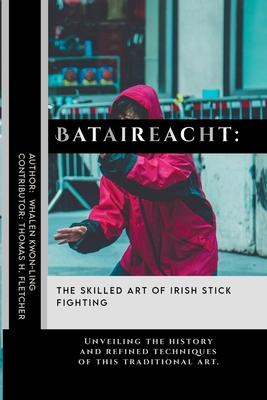"Bataireacht: The Skilled Art of Irish Stick Fighting" is a comprehensive exploration of the ancient and intriguing martial art of Bataireacht. This book delves deeply into the origins, techniques, and cultural significance of this traditional Irish fighting style. Readers will be taken on a journey through the historical roots of Bataireacht, tracing its beginnings from the times when Irish warriors relied on their trusted sticks, known as shillelaghs, for both combat and protection.
The shillelagh itself is an iconic symbol in Irish culture, and the book provides a detailed examination of its construction, use, and the craftsmanship involved in making these unique weapons. Various techniques and styles of Bataireacht are thoroughly described, highlighting the skill and precision required to master this art. Readers will gain insights into the different schools and methods that have evolved over centuries, showcasing the rich diversity within the practice.
Training and practice in Bataireacht are also covered extensively, offering readers a glimpse into the rigorous discipline and dedication needed to become proficient. The book discusses traditional training methods, exercises, and the importance of physical fitness and mental focus in mastering Bataireacht. This section is particularly useful for those interested in learning the art themselves or understanding the commitment involved.
The cultural significance of Bataireacht is another focal point, emphasizing its role in Irish folklore and heritage. The book illustrates how this martial art has been woven into the fabric of Irish history, influencing legends, stories, and even the everyday lives of people. Notable practitioners and masters of Bataireacht are highlighted, providing inspiration and a sense of continuity within the tradition. Their stories and contributions to the art form are recounted with great respect and detail.
In modern times, Bataireacht has experienced a revival, and the book explores contemporary efforts to preserve and promote this ancient skill. It examines the role of modern schools, organizations, and enthusiasts who are dedicated to keeping the tradition alive. This includes discussions on the challenges and successes faced in teaching Bataireacht in the modern world.
Bataireacht's influence extends beyond Ireland, and the book touches upon its presence in popular culture, including literature, film, and media. A comparative analysis with other stick fighting traditions worldwide offers readers a broader perspective on where Bataireacht stands in the global context of martial arts.
For those interested in learning more, the book provides a wealth of resources, including information on schools, instructors, and training materials. It serves as a valuable guide for anyone looking to delve deeper into the world of Irish stick fighting.
In conclusion, "Bataireacht: The Skilled Art of Irish Stick Fighting" is an essential read for anyone interested in martial arts, Irish culture, or historical combat techniques. The book celebrates the legacy of Bataireacht, honoring its past while looking towards its future, ensuring that this unique and skilled art continues to thrive for generations to come.
